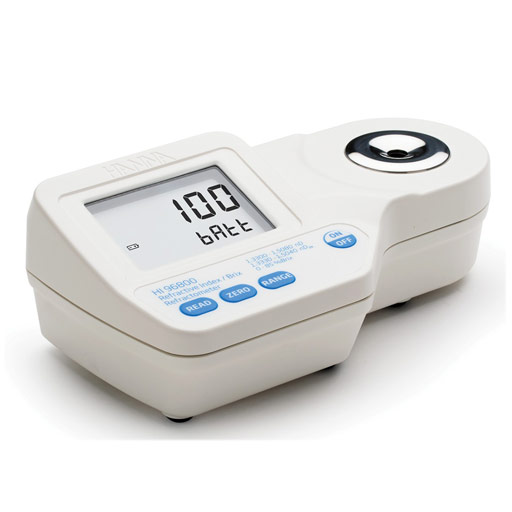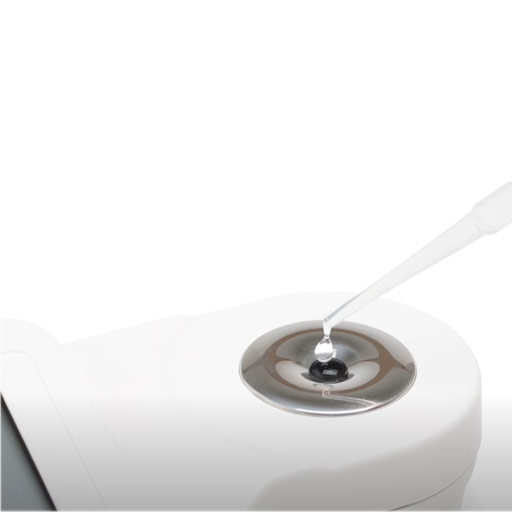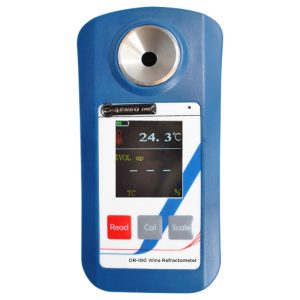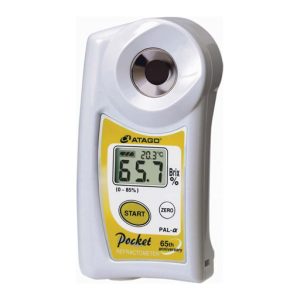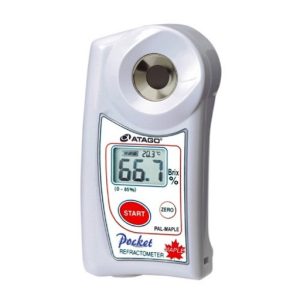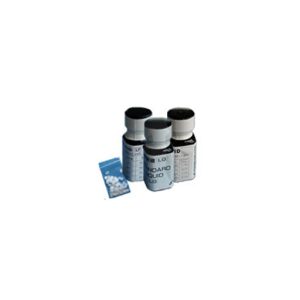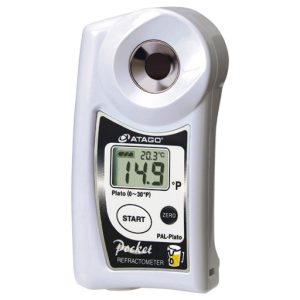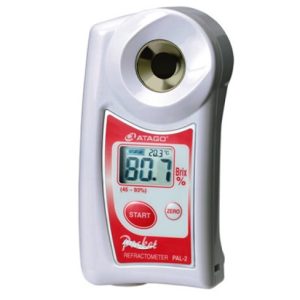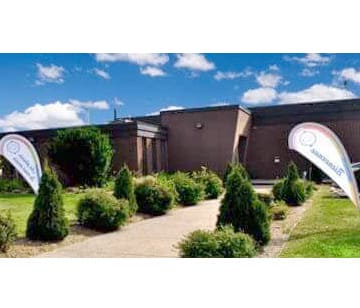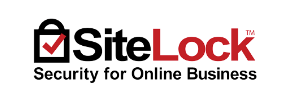The HI96800 Hanna Digital Refractometer’s intuitive layout and pinpoint accuracy ensure effortless operation and reliable readings every time.
The new Hanna Digital Refractometer HI96800 Digital Refractometer measures Refractive Index and displays results in both temperatures compensated (nD20) and non-temperature compensated (nD) formats on the dual-level LCD screen.
Refractive Index is measured to determine a liquid’s composition and assess its concentration and density. It is used by many industries including pharmaceutical, food and environmental, as an important indicator of quality and consistency. The HI96800 also converts Refractive Index to % Brix with the push of a single button.
- 1.3300-1.5080 Refractive Index range with +/- 0.0005 accuracy
- 0-85% Brix range with +/- 0.2% accuracy
- Simple one-button calibration
- Automatic Temperature Compensation (ATC) and No Temperature Compensation Settings (NoTC)
HI96800 Refractive Index/Brix Refractometer Overview
This new Hanna Digital Refractometer combines form and function into one compact unit. Featuring a 1.5 second response time, the HI96800 measures the refractive index from 1.3330 to 1.5040 with temperature compensation (nD20) and from 1.3300 to 1.5080 without temperature compensation (nD). For added versatility, the refractometer also converts the refractive index to % Brix (0-85%). One-button calibration makes setup quick and easy.
The improved easy-to-read LCD screen displays temperature units (°C or °F) and measurements simultaneously. By pressing the ‘Range’ key, users can easily switch between refractive index (nD), refractive index (nD20), and % Brix readings while in measurement mode. The HI96800’s IP65 water-resistant casing and sealed sample well is built to perform under harsh conditions, making it suitable for use in the field or in the laboratory.
Specifications
| Sugar Content Range | 0.0 to 85.0% Brix; 1.3300 to 1.5080 nD; 1.3330 to 1.5040 nD₂₀ |
|---|---|
| Sugar Content Resolution | 0.1 % Brix; 0.0001 nD; 0.0001 nD₂₀ |
| Sugar Content Accuracy | ±0.2% Brix; ±0.0005 nD; ±0.0005 nD₂₀ |
| Temperature Range | 0 to 80°C (32 to 176°F) |
| Temperature Resolution | 0.1°C (0.1°F) |
| Temperature Accuracy | ±0.3 °C (±0.5 °F) |
| Temperature Compensation | automatic between 10 and 40°C (50 to 104°F) |
| Automatic Shut-Off | after three minutes of inactivity |
| Battery Type/Life | 9V / approximately 5000 readings |
| Dimensions | 192 x 102 x 67 mm (7.6 x 4.01 x 2.6”) |
| Weight | 420 g (14.8 oz.) |
| Refractometer Light Source | yellow LED |
| Minimum Sample Volume | 100 μL (to cover prism totally) |
| Sample Cell | stainless steel ring and flint glass prism |
| Measurement Time | approximately 1.5 seconds |
| Ordering Information | HI96800 is supplied with a battery and instruction manual |
| Notes | Enclosure Rating: IP65 |
Refractive Index
The HI96800 takes measurements based on a sample’s refractive index. A Refractive index is a measurement of how light behaves as it passes through the sample. Depending on the sample’s composition, light will refract and reflect differently. By measuring this activity with a linear image sensor, the sample’s refractive index can be assessed and used to determine its physical properties such as concentration and density. In addition to the linear image sensor, the HI96800 uses an LED light, prism, and lens to make measurement possible.
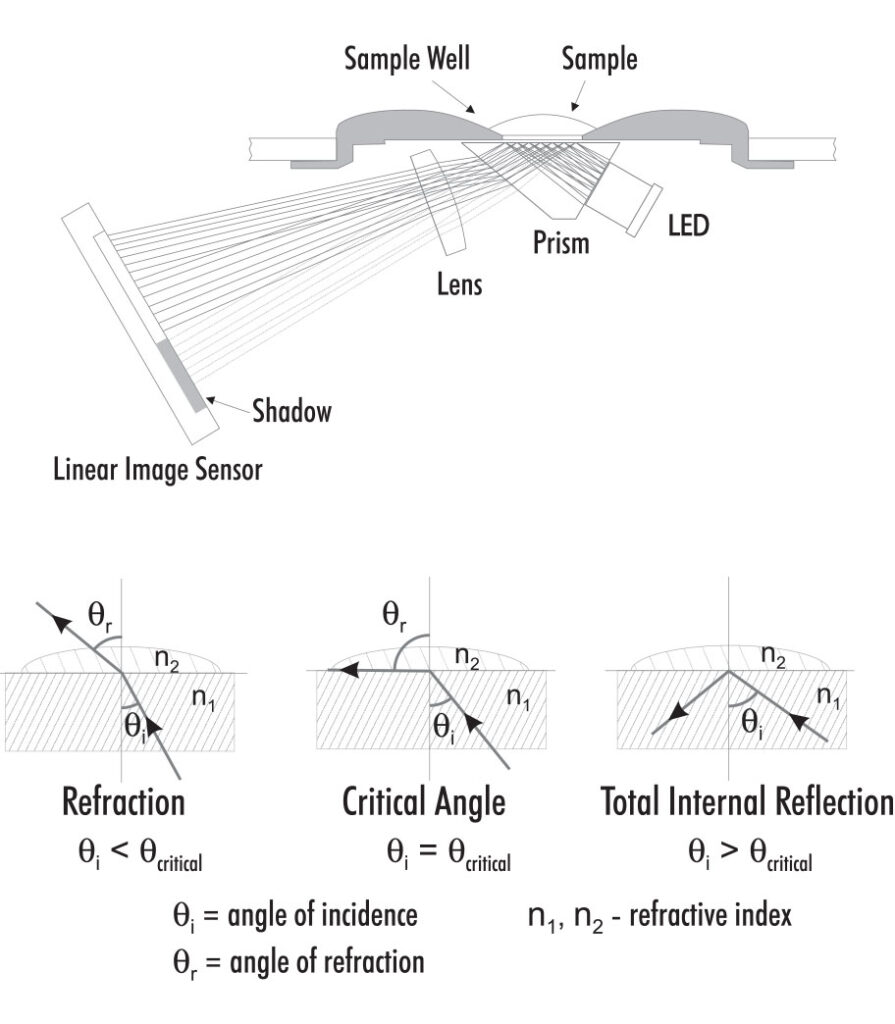
Variations in temperature will affect the accuracy of refractive index readings, so the use of temperature compensation is highly recommended for reliable results.
The HI96800 contains a built-in temperature sensor and is programmed with temperature compensation algorithms in accordance with the ICUMSA Methods Book Standard for a percent by weight sucrose solution at 20°C. These compensation algorithms vary based on the parameter being measured.
The user can switch between temperature compensated (nD20), non-temperature compensated (nD) and temperature compensated % Brix readings by pressing the ‘Range’ key while in measurement mode.
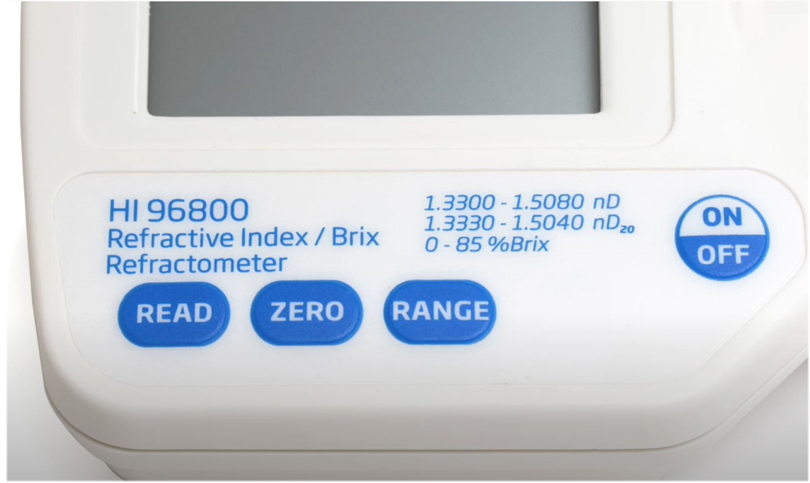
Features at-a-glance:
One-point calibration
- Calibrate with distilled or deionized water
Small sample size
- Sample size can be as small as 2 metric drops (100 μl)
Automatic Temperature Compensation (ATC)
- Automatically compensates for temperature variations
Quick, accurate results
- Readings are displayed in approximately 1.5 seconds
Upgraded Dual-level LCD
- The large LCD screen displays nD20, nD, or % Brix and temperature readings simultaneously
- Easy to clean and corrosion-resistant
Battery indicators
- Battery percent level remaining at startup and low battery indicator
Automatic shut-off
- Conserves battery life by shutting off automatically after three minutes of inactivity
IP65 water-resistant protection
- Water-resistant ABS plastic casing designed to perform under laboratory and field conditions.
QUICK TIP:
Calibration Procedure:
1. Press the ON/OFF key, then release. Two instrument test screens will be displayed briefly; all LCD segments followed by the percentage of remaining battery life. The meter will briefly display an indication of the measurement unit set. When LCD displays dashes, the instrument is ready.
2. Using a plastic pipette, fill the sample well with distilled or deionized water. Make sure the prism is completely covered.
Note: If the ZERO sample is subject to intense light such as sunlight or another strong source, cover the sample well with your hand or other shade during the calibration.
3. Press the ZERO key. If no error messages appear, your unit is calibrated.
Note: The -0- or 0.0 screen will remain until a sample is measured or the power is turned off.
4. Gently absorb the ZERO water standard with a soft tissue. Use care not to scratch the prism surface. Dry the surface completely. The instrument is ready for sample measurement.
Note: If the instrument is turned off the calibration will not be lost.
Learn more in the Instruction Manual / Quick Start Guide
The HI96800 Hanna Digital Refractometer’s intuitive layout and pinpoint accuracy ensure effortless operation and reliable readings every time.
The new Hanna Digital Refractometer HI96800 Digital Refractometer measures Refractive Index and displays results in both temperatures compensated (nD20) and non-temperature compensated (nD) formats on the dual-level LCD screen.
Refractive Index is measured to determine a liquid’s composition and assess its concentration and density. It is used by many industries including pharmaceutical, food and environmental, as an important indicator of quality and consistency. The HI96800 also converts Refractive Index to % Brix with the push of a single button.
- 1.3300-1.5080 Refractive Index range with +/- 0.0005 accuracy
- 0-85% Brix range with +/- 0.2% accuracy
- Simple one-button calibration
- Automatic Temperature Compensation (ATC) and No Temperature Compensation Settings (NoTC)
HI96800 Refractive Index/Brix Refractometer Overview
This new Hanna Digital Refractometer combines form and function into one compact unit. Featuring a 1.5 second response time, the HI96800 measures the refractive index from 1.3330 to 1.5040 with temperature compensation (nD20) and from 1.3300 to 1.5080 without temperature compensation (nD). For added versatility, the refractometer also converts the refractive index to % Brix (0-85%). One-button calibration makes setup quick and easy.
The improved easy-to-read LCD screen displays temperature units (°C or °F) and measurements simultaneously. By pressing the ‘Range’ key, users can easily switch between refractive index (nD), refractive index (nD20), and % Brix readings while in measurement mode. The HI96800’s IP65 water-resistant casing and sealed sample well is built to perform under harsh conditions, making it suitable for use in the field or in the laboratory.
Specifications
| Sugar Content Range | 0.0 to 85.0% Brix; 1.3300 to 1.5080 nD; 1.3330 to 1.5040 nD₂₀ |
|---|---|
| Sugar Content Resolution | 0.1 % Brix; 0.0001 nD; 0.0001 nD₂₀ |
| Sugar Content Accuracy | ±0.2% Brix; ±0.0005 nD; ±0.0005 nD₂₀ |
| Temperature Range | 0 to 80°C (32 to 176°F) |
| Temperature Resolution | 0.1°C (0.1°F) |
| Temperature Accuracy | ±0.3 °C (±0.5 °F) |
| Temperature Compensation | automatic between 10 and 40°C (50 to 104°F) |
| Automatic Shut-Off | after three minutes of inactivity |
| Battery Type/Life | 9V / approximately 5000 readings |
| Dimensions | 192 x 102 x 67 mm (7.6 x 4.01 x 2.6”) |
| Weight | 420 g (14.8 oz.) |
| Refractometer Light Source | yellow LED |
| Minimum Sample Volume | 100 μL (to cover prism totally) |
| Sample Cell | stainless steel ring and flint glass prism |
| Measurement Time | approximately 1.5 seconds |
| Ordering Information | HI96800 is supplied with a battery and instruction manual |
| Notes | Enclosure Rating: IP65 |
Refractive Index
The HI96800 takes measurements based on a sample’s refractive index. A Refractive index is a measurement of how light behaves as it passes through the sample. Depending on the sample’s composition, light will refract and reflect differently. By measuring this activity with a linear image sensor, the sample’s refractive index can be assessed and used to determine its physical properties such as concentration and density. In addition to the linear image sensor, the HI96800 uses an LED light, prism, and lens to make measurement possible.

Variations in temperature will affect the accuracy of refractive index readings, so the use of temperature compensation is highly recommended for reliable results.
The HI96800 contains a built-in temperature sensor and is programmed with temperature compensation algorithms in accordance with the ICUMSA Methods Book Standard for a percent by weight sucrose solution at 20°C. These compensation algorithms vary based on the parameter being measured.
The user can switch between temperature compensated (nD20), non-temperature compensated (nD) and temperature compensated % Brix readings by pressing the ‘Range’ key while in measurement mode.

Features at-a-glance:
One-point calibration
- Calibrate with distilled or deionized water
Small sample size
- Sample size can be as small as 2 metric drops (100 μl)
Automatic Temperature Compensation (ATC)
- Automatically compensates for temperature variations
Quick, accurate results
- Readings are displayed in approximately 1.5 seconds
Upgraded Dual-level LCD
- The large LCD screen displays nD20, nD, or % Brix and temperature readings simultaneously
- Easy to clean and corrosion-resistant
Battery indicators
- Battery percent level remaining at startup and low battery indicator
Automatic shut-off
- Conserves battery life by shutting off automatically after three minutes of inactivity
IP65 water-resistant protection
- Water-resistant ABS plastic casing designed to perform under laboratory and field conditions.
QUICK TIP:
Calibration Procedure:
1. Press the ON/OFF key, then release. Two instrument test screens will be displayed briefly; all LCD segments followed by the percentage of remaining battery life. The meter will briefly display an indication of the measurement unit set. When LCD displays dashes, the instrument is ready.
2. Using a plastic pipette, fill the sample well with distilled or deionized water. Make sure the prism is completely covered.
Note: If the ZERO sample is subject to intense light such as sunlight or another strong source, cover the sample well with your hand or other shade during the calibration.
3. Press the ZERO key. If no error messages appear, your unit is calibrated.
Note: The -0- or 0.0 screen will remain until a sample is measured or the power is turned off.
4. Gently absorb the ZERO water standard with a soft tissue. Use care not to scratch the prism surface. Dry the surface completely. The instrument is ready for sample measurement.
Note: If the instrument is turned off the calibration will not be lost.
Learn more in the Instruction Manual / Quick Start Guide






